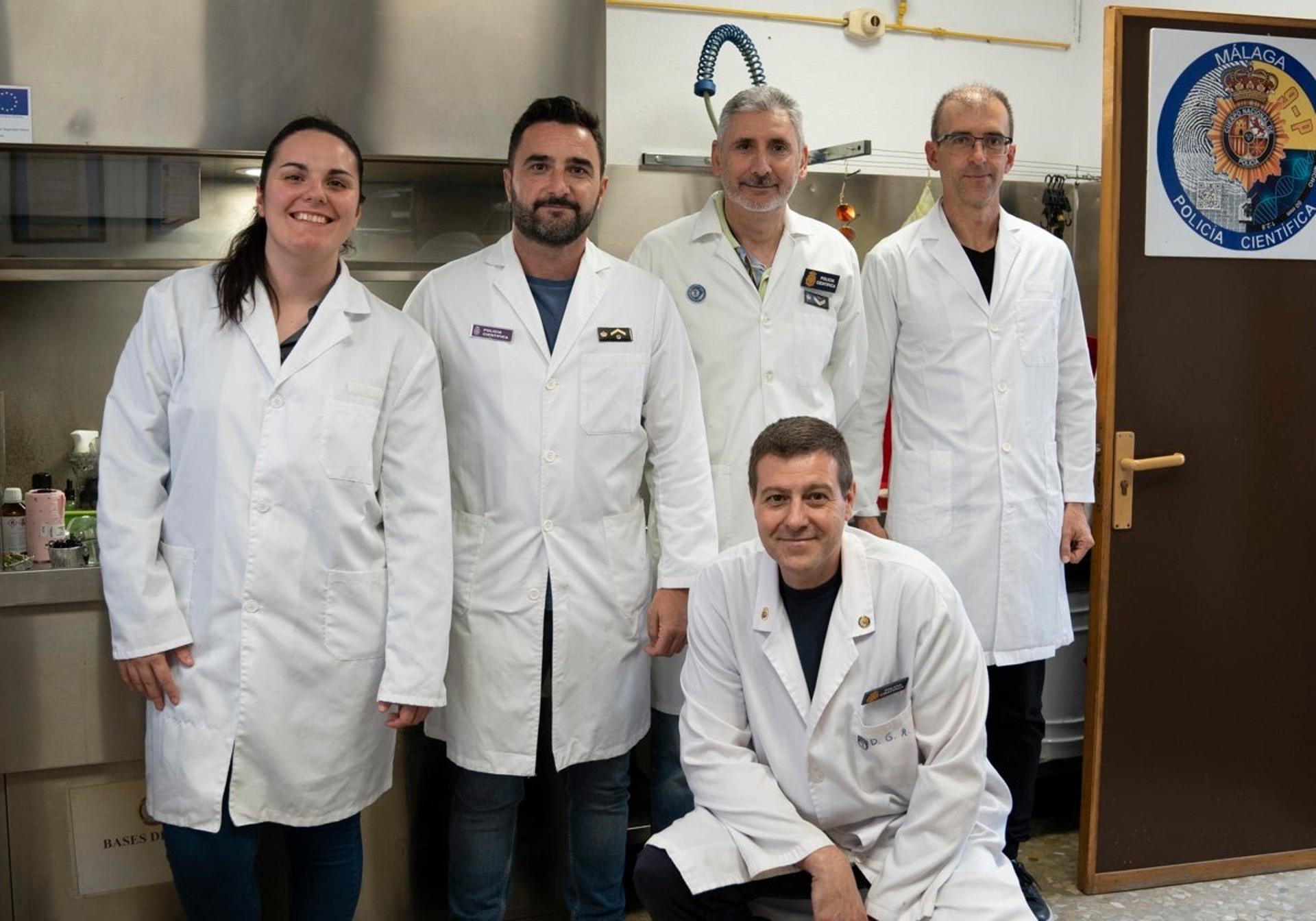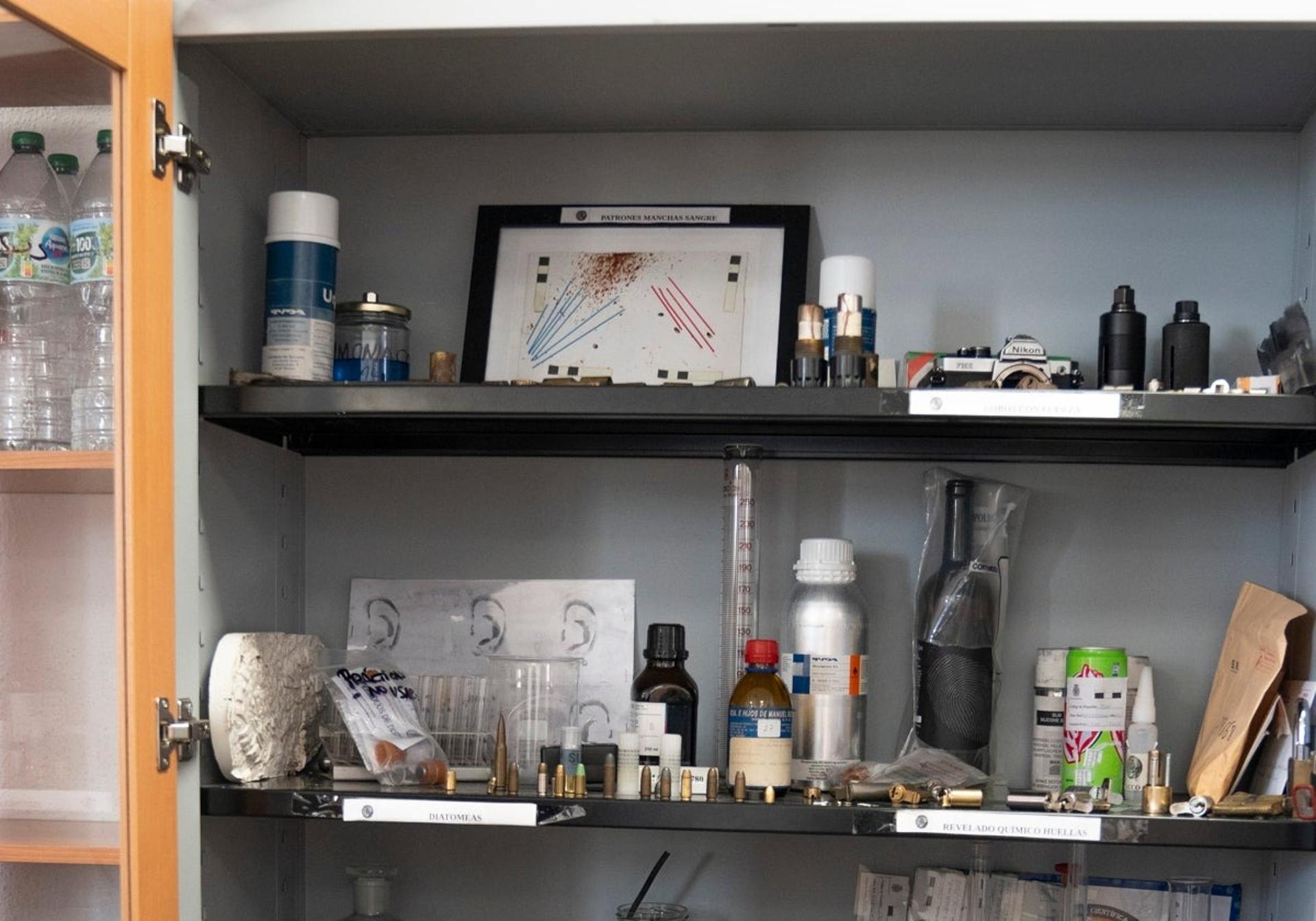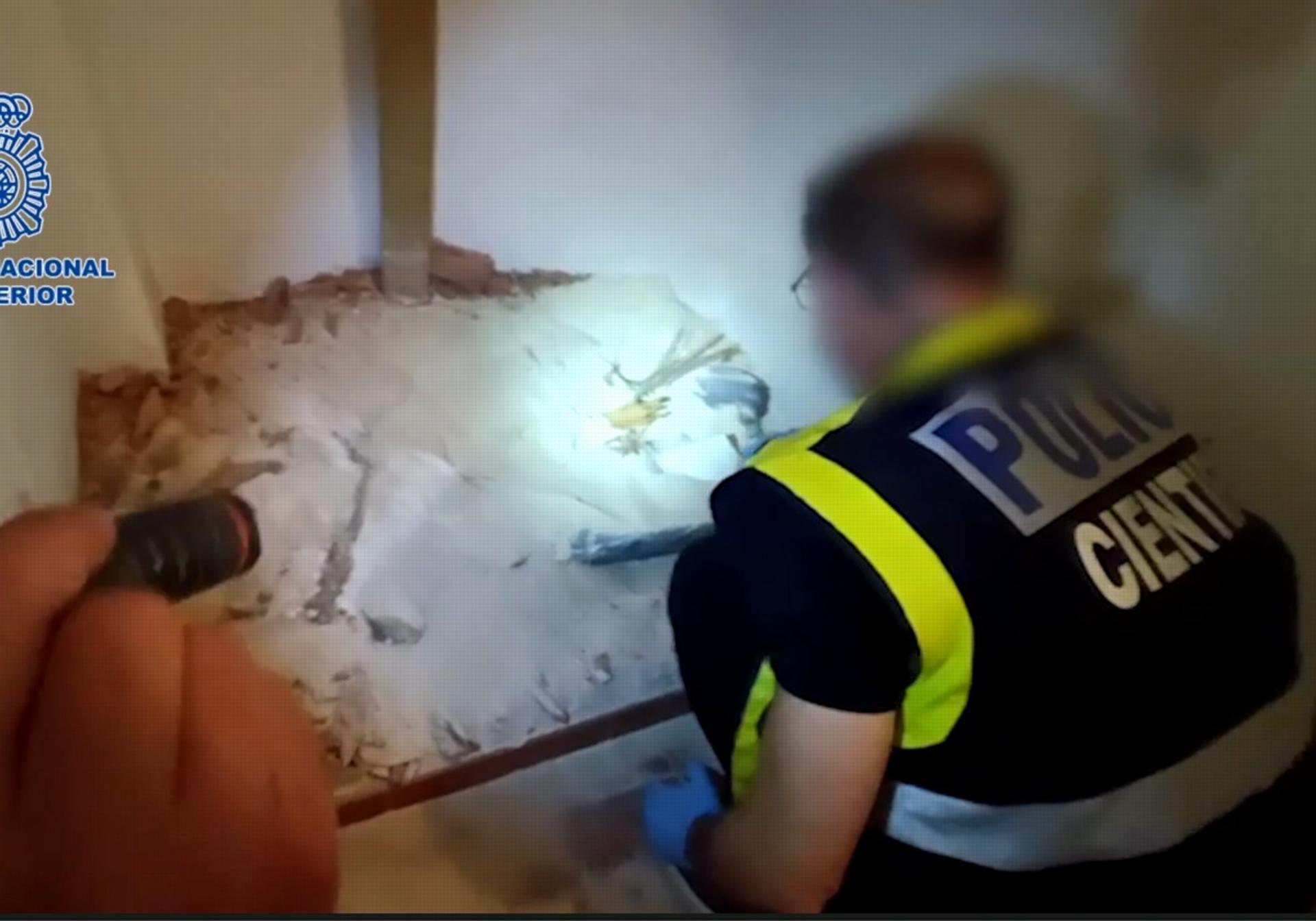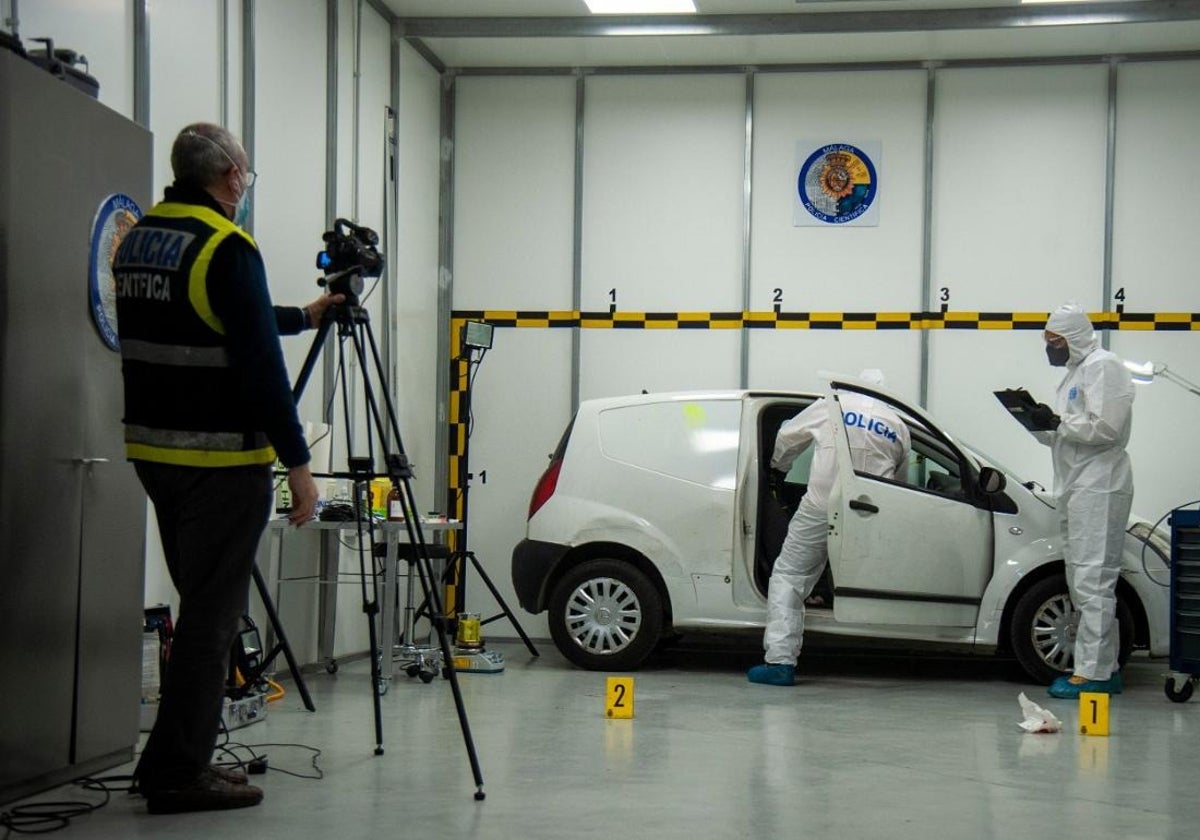The art of solving crime with a drop of blood
Malaga's crime scene investigation unit collects evidence crucial to cracking the most violent cases on the Costa del Sol
In a blood-stained scene, one tiny drop on the sole of the victim's foot shed light on a case of femicide in Malaga city a decade ago. It was the only trace that her husband left behind when he cut himself while stabbing her with a box cutter in a warehouse in Guadalhorce industrial estate. But it was key to his identification and incrimination.
In August 2022, David, a 21-year-old student, was found shot twice in the head on a farm in Los Montes. With no cameras or witnesses, biological evidence was once again key to solving the murder. The traces of blood followed a pattern which led experts to believe that the body had been tampered with and that there could be fingerprints on his backpack's zip. Analysis of the DNA and 150 years of family tree contributed to the arrest of serial killer 'Dinamita Montilla'.
These are two examples in which the observation, collection and analysis of biological evidence were crucial in solving complex police investigations. "Blood stains explain what happened perfectly: the type of weapon used, whether the victim was able to defend themselves, the position they were in and the number of attacks they suffered," said Rubén Martínez Moreno, head of crime scene investigation in Malaga police's forensics department, in an interview with SUR. His team, made up of 11 professionals, doesn't deal with witnesses or arrest "bad guys". Their job is to reconstruct the crime scene through "objective evidence".


-"Good evening, we are calling from the 091 room, there has been a crime."
The phone can ring at any time of the day. However, the early hours of the morning see reports of the most violent crimes: homicides and sexual assaults. When they pick up the phone, the inspector asks them not to describe the crime in too much detail, so as to avoid confusing their investigative process.
Wearing PPE coveralls and protected with gloves, hats and masks - the latter in case of toxic gases - the officers evacuate the crime scene as soon as they arrive to preserve the evidence. "Once the area has been secured and a path has been established for those who have to come in and out of the site, our priority is the biological evidence, as it is the most easily damaged. We study whether there is blood, sputum, or semen and we work according to whether there is a known perpetrator or not.
The search and selection of on-site evidence, according to the chief, must be done thoroughly, accurately and without haste.
"You can't just take 60 samples indiscriminately and hope you hit the jackpot because DNA testing is very expensive and there isn't a lab in every police station as there is in the US. In addition, the criminal usually tries to mask the scene by cleaning or distorting to avoid being discovered and to make police work more difficult, so "we have to consider many hypotheses". As they move forward, they begin to discard some theories and explore others, which can delay the work for hours.
After analysing the main scene CSI style, the officers widen the radius in search of other evidence that could prove important.
"On many occasions we have found the perpetrator's DNA in rubbish bins or in the surrounding sewers." Once field work has been carried out, the forensic experts send the evidence to the lab - currently, Spain has five - normally at the General Police Station in Madrid to extract DNA and obtain a genetic profile. During this stage, the inspector stressed, the most important thing is to maintain the chain of custody so that there are no doubts about the origin or custody of evidence in the case.
But what happens when the samples don't provide genetic profile? The inspector reveals other circumstantial evidence that can prove the perpetrator's involvement: analysis of fibres; footprints; broken glass; pigments; and even microscopic marine algae that can be found on car pedals (if the alleged perpetrator threw the body into the sea or a pond). This happened in 2015 in a case of a missing three-year-old, Alejandro, after his family reported him missing in Rincón de la Victoria. Cases like these demonstrate the need for "a broader perspective", Martínez explained. "The classic process allows us to continue identifying many people, but there are other alternatives that are not known and that we should share among the different police units".
Although the main factors are stains, fingerprints, swabs and genetic markers, there are cases that go beyond science. Sibora, a 22-year-old Italian-Albanian woman, disappeared in summer 2014 in Torremolinos. She had moved to a duplex in Malaga city three years earlier with her boyfriend, the man who last saw her. In May 2023, the man was arrested for stabbing his partner, Paula, to death in Torremolinos. The parallels were chilling and Sibora's family, thousands of kilometres away, demanded her case be reopened.

Malaga's crime scene investigation unit - headed up by Inspector Martínez alongside Cordoba's Commissioner Salvador Romero - then became the driving force behind the case. In a spontaneous confession, Marco admitted that Sibora's body was behind a wall of the flat they shared, in the Calvario neighbourhood. The agents went to the property at least four times (where another couple was already living) to inspect the walls. They drilled holes and used micro-cameras to check if the body was indeed walled up in the flat - but to no avail.
"I would go to bed and get up thinking about it, something told me her body was there," explained the inspector, who never threw in the towel. In their efforts to find it, they noticed an irregularity in the wall and checked the flat's plans. Behind that partition there was a wardrobe that shouldn't have been there and they pulled it down. In a wooden crate, buried in lime, the police found the young woman's body along with some of her belongings and a bouquet of flowers. "It was a brutal but satisfying conclusion, especially for her mother, because otherwise she would have stayed there forever."
With a degree in chemistry, the head of crime scene investigations for the last 15 years in Malaga is considered a "master" by police officers who have worked under him. He explained that he tries to instil professionalism and hard work in his team.
"Our work ends two, three or four years later, when we attend the trial, which is why in this unit, rushing is not an option. We are always looking for the most insignficant detail because in the end, it can become crucial." And with this premise, the inspector warned the bad guys: "Anyone who commits a crime in Malaga is starting the countdown to their own arrest."

